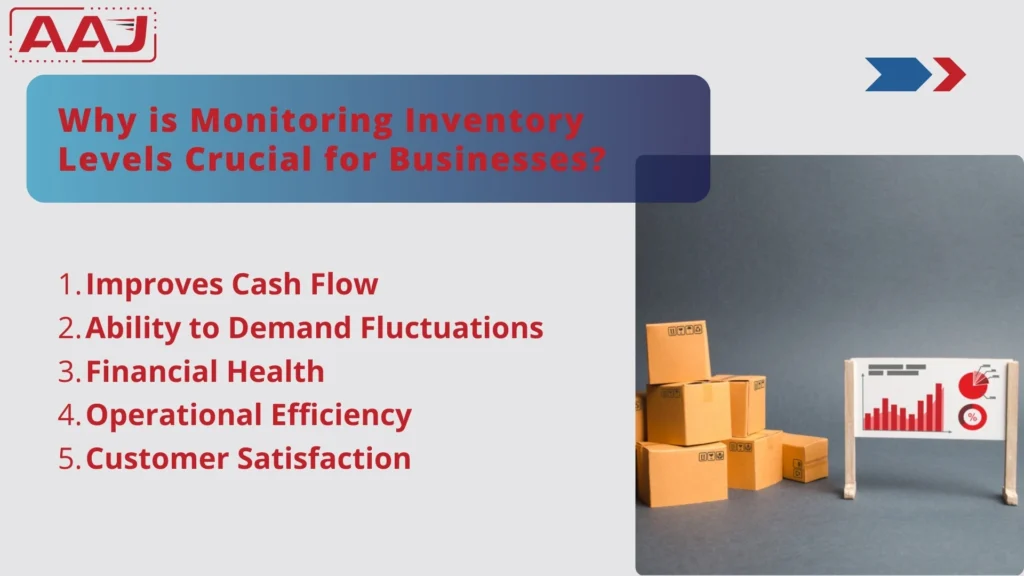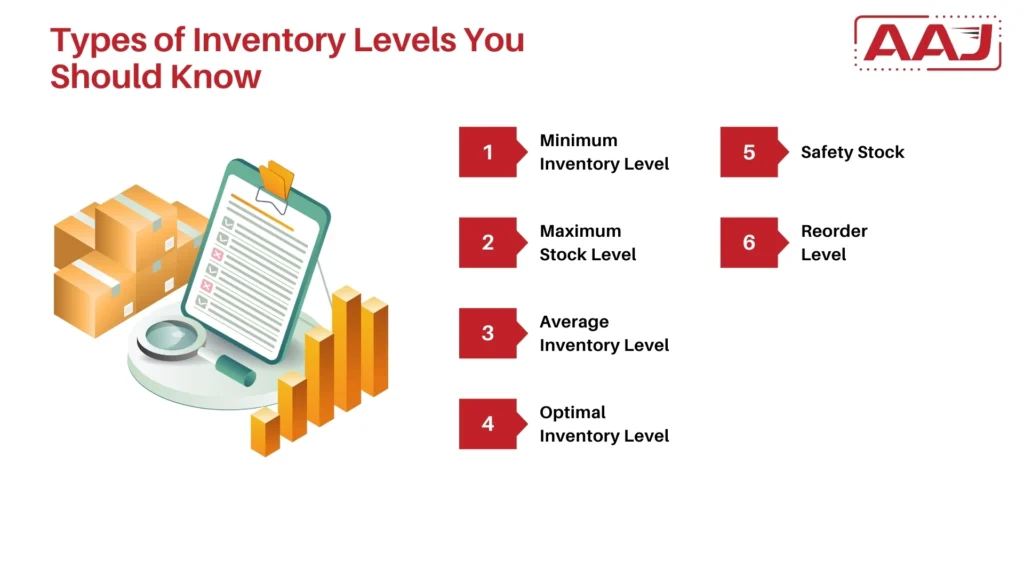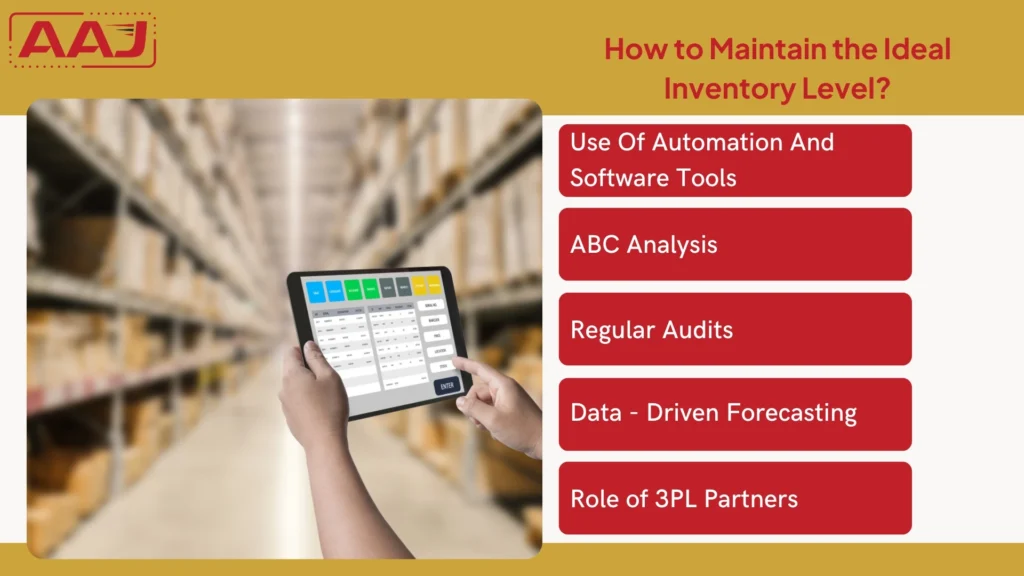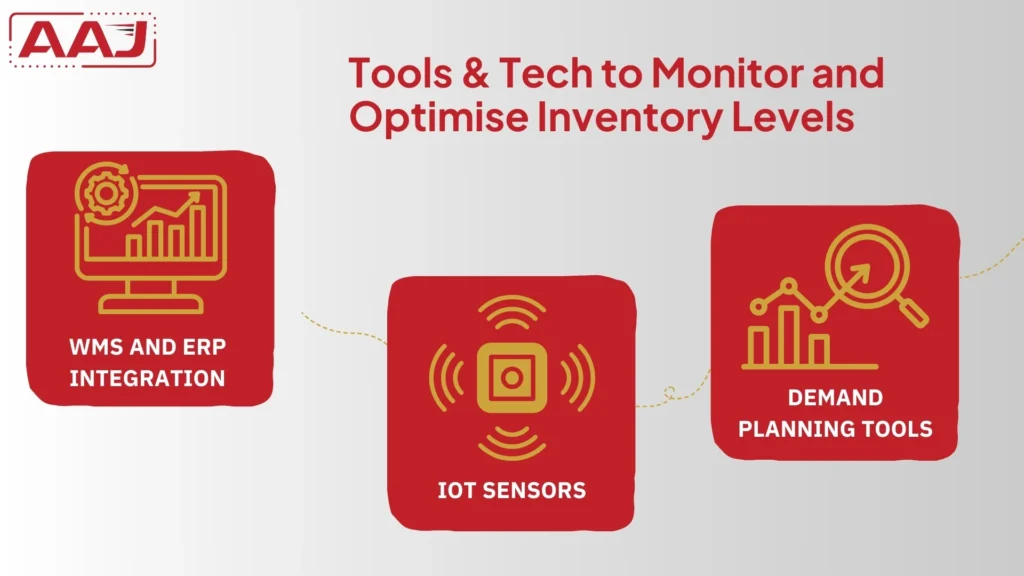Inventory level refers to a business’s stock quantities in a warehouse for distribution or sales at a given time. They have a direct impact on business profitability and operational efficiency. When a business piles up too many products, it can clutter the warehouse and increase unnecessary storage costs. Simultaneously, keeping fewer products can force customers to buy products from competitors. A correct inventory level is highly essential for the success of a business. Well, it can happen through various modern techniques like JIT or ABC analysis, inventory management systems and barcode scanning. Let’s explore the Inventory level with deep understanding.
What is Inventory Level?

Inventory levels refer to the quantity of goods or products a business holds to meet customer demands effectively. Optimal inventory levels can prevent problems like overstocking and out-of-stock issues.
Let’s discuss real-world logistics with an example. A business sells millions of products daily. The company orders many winter jackets without checking its current stock. The demand for winter jackets reduces when winter ends, and the company must unnecessarily hold the winter jackets in the warehouse space till the next winter season. Some jackets may get damaged over time.
Simultaneously, a popular cleaning product sells much faster on Amazon. If the company does not keep track of the cleaning products, it will cause out-of-stock issues. It can lead to customer dissatisfaction. The customer will buy the same cleaning product from its competitor. In both scenarios, companies face financial losses, that is why managing the inventory level is a must to make business profitable.
Why is Monitoring Inventory Levels Crucial for Businesses?

Accurate inventory levels are significant for the business for the following reasons.
1. Improves Cash Flow
Maintaining optimal inventory levels can optimize the cash flow of a business. It even allows companies to anticipate when to reorder stock in advance.
2. Ability to Demand Fluctuations
The product demand varies with time. If a business keeps optimal inventory levels, it can suddenly respond to market demands without worrying about overstocking or out-of-stock issues.
3. Financial Health
Optimal inventory levels can protect a business from financial stress. When a business holds too much stock, it acquires unnecessary space in the warehouse. It increases the business’s warehousing costs. Research says the cost per square foot of warehouse space has increased by 27 per cent since 2017. Again, if a business keeps significantly less stock, it can lead to lost sales opportunities.
4. Operational Efficiency
Optimal inventory levels can prevent operational bottlenecks in a business. When the right amount of resources is available, it will not hinder the manufacturing process. All the supply chain processes can occur efficiently in a company.
5. Customer Satisfaction
Enhancing customer satisfaction is one of the top priorities of a business. Having optimal inventory levels can make the customers happy and increase brand reputation in the market.
Importance Of Inventory Levels By Industry

1. Warehousing
When the business manages warehouse storage, it has to pick up the ordered product, package it, and hand it over to the shipper. Timely order fulfillment can increase customer satisfaction. However, if the ordered product is unavailable in the warehouse, it can lead to a delayed shipment, making customers unhappy. Optimal inventory levels must be available in the warehouse to fulfil the orders.
2. Retail
When a retailer stores less stock, it can lead to missed sales opportunities. Again, unsold items will pile up on their shelves if they stock too much. Retailers should keep optimal inventory levels to increase their revenue and customer loyalty.
3. Third-party Logistics Company
3PL companies maintain inventories for other businesses. Inefficient inventory levels can lead to increased returns and decreased supply chain operations for its clients.
Types of Inventory Levels You Should Know

A business should know various types of inventory levels. Here is a list below.
1. Minimum Inventory Level
Minimum inventory levels represent the lowest quantity of stock a business should hold to meet customer demand effectively. Falling below this level can lead to out-of-stock problems.
2. Maximum Stock Level
Maximum inventory levels represent the maximum quantity of stock a business holds to satisfy customers. Exceeding it can lead to overstocking problems. It can unnecessarily increase the holding costs of a company.
3. Average Inventory Level
Average inventory level refers to the average amount of stock a business holds for a particular period. It helps in inventory planning and calculating the inventory turnover ratio.
4. Optimal Inventory Level
It strikes a balance between minimum and maximum inventory levels. It is based on factors like market conditions and sales trends. This level indicates enough stock in the warehouse to meet customer demands without incurring high carrying costs.
5. Safety Stock
Safety stock determines the extra stock kept in the warehouse to meet unexpected demand or supply delays. It acts like insurance when there are out-of-stock issues in the warehouse; safety stock will fulfill the sudden demand.
6. Reorder Level
It is a trigger point for replenishing inventories in the warehouse. It prevents stockout issues and ensures that the supply chain logistics runs smoothly.
Inventory Level Formula: With Examples
Minimum Inventory Level
Minimum Inventory Level = Reorder point – (normal consumption * normal delivery time)
Let’s discuss this with an example. A business is running a clothes store. The reorder point for 500 clothes is a typical delivery point of 4 weeks. The company sells 80 clothes per week.
Minimum inventory level = 500 – (80*4) = 180
So, the minimum inventory level should be 180 clothes.
2. Maximum Inventory Level
Maximum inventory level = Reorder point + reorder quantity – (minimum consumption * minimum lead time)
Imagine a business selling books. The reorder point is 500 copies, and the business reorders 1200 copies at a time.
The minimum sales rate is 60 copies per week. The minimum lead time is 5 weeks.
Maximum inventory level = 500 +1200 – (60*5) = 1400
The maximum inventory level is 1400 copies.
3. Average Inventory Level
Opening inventory (at the starting of the month) = 1000 units
Closing inventory (at the end of the month) = 700 units.
Average inventory level = 1000 +7002 = 850
Factors Affecting Inventory Levels

Various factors affect inventory levels. We are listing them below.
1. Demand Patterns
Customer demands keep changing with time. Companies dealing with more fluctuating demands must keep some extra safety stock on hand to avoid stockout issues and meet customer demands effectively.
Simultaneously, in certain businesses, demand spikes during particular seasons or holidays. So, such a business needs to hold some extra stock on hand to meet demands at such a time.
2. Lead Time
Lead time means the time taken by the supplier to replenish the inventory. If a business faces longer lead times, it must keep some extra safety stock on hand to avoid stockout problems.
3 . Order Frequency
Order frequency means how frequently a business places an inventory order. If a company orders often, it has to carry less inventory.
4. Supplier Reliability
If a supplier delays delivering orders, a business must carry extra safety stock to meet customer demands.
5. Warehouse Capacity
It refers to the physical space available to store inventories. If a business does not have more space in its warehouse, it cannot hold much inventory, even if the demand is high. Choose a warehousing company that offers scalable storage solutions.
Challenges Businesses Face Due to Incorrect Inventory Levels
There are specific challenges that a business faces due to incorrect inventory levels. Here is a list below.
1. Overstocking
When a business overstocks products, it occupies more space inside the warehouse. It thus compels a business owner to pay extra fees for utilities, staff and many more.
Again, storing products for extended periods can make some products outdated. Hence, the business has to face a loss.
Excess inventories can even tie up capital, which a business could have used in new product development or exploration of new markets.
2. Understocking
When a product in a business goes out of stock, it compels customers to buy products from its competitors. Again, understocking problems can cause unsatisfied customers and reduce brand reputation in the market.
3. Impact On Logistics And Warehousing Operations
Overstocking products can clutter the entire warehouse. It can decrease the efficiency of picking and packaging warehouse operations. Again, staff may need more time to search for the customer’s ordered product, which can delay order fulfilment.
How to Maintain the Ideal Inventory Level?

Maintaining an ideal inventory level enhances customer satisfaction and reduces logistics costs.
The key strategies for maintaining an ideal inventory level are as follows.
1. Use Of Automation And Software Tools
A business needs to adopt advanced technology, like an inventory management system, to track warehouse stock levels. Barcode and RFID scanning can update inventory systems in real-time.
2. ABC Analysis
Businesses can adopt the ABC analysis inventory model. The inventories are under A, B or C.
- Items are highly valuable items. They account for 10% of the total inventories but generate almost 70% of the sales.
- B items account for 20% of inventories and generate 20% of sales. These items are sold out almost regularly but are not as valuable as A items.
- C items account for 70% of inventories but generate only 10% of sales.
3. Regular Audits
Regular stock audits involve a comparison of physical inventory with the records in the inventory management system. The business can manually inspect the items or do random audits on highly valuable or fast-moving items. This process identifies damaged products and theft or data entry errors.
4. Data – Driven Forecasting
Businesses use historical trends and sales data or monitor customer behavior to predict future inventory requirements. Proper data-driven demand forecasting techniques avoids problems like stockout and overstocking issues. It even improves the cash flow of the business.
5. Role of 3PL Partners
When a business cannot efficiently manage all the supply chain and 3PL processes, it outsources these activities to a third-party logistics Company. The company will manage various aspects like warehousing, inventory management, picking, packaging, shipping and logistics. It reduces the cost of the business and allows it to focus on core operations like product development and exploration of new markets.
Tools & Tech to Monitor and Optimise Inventory Levels

1. WMS And ERP Integration
Businesses need to integrate a warehouse management system and enterprise resource planning to have better demand forecasting and real-time inventory visibility of the products.
2. IoT Sensors
IoT sensors are smart devices businesses can install to track product movement inside the logistics warehouse. These sensors reduce losses and theft and improve inventory accuracy.
3. Demand Planning Tools
Demand planning tools like Zoho analyse historical sales, market trends and customer behavior to predict product demand in the market.
Conclusion
Managing inventory level is one of the most critical aspects of the supply chain. Overstocking can increase holding costs, whereas understocking can cause missed sale opportunities and customer dissatisfaction.
Businesses can maintain proper inventory levels in the warehouse by utilizing modern tools and techniques like an inventory management system and IoT sensors. These techniques can help a business stay competitive in today’s dynamic market.




